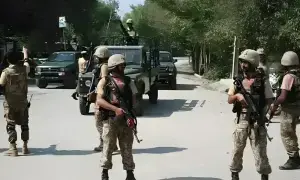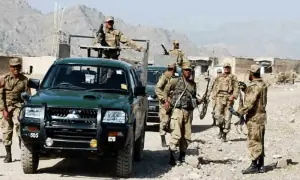PIMS team find ‘bullet’ in Arshad Sharif’s body that Kenyan medics missed
The Pakistani medical team which conducted the autopsy on slain Pakistani journalist Arshad Sharif in Islamabad found a piece of metal, later declared a “bullet”, from the chest, a Kenyan newspaper Nation revealed on Monday.
Eight pathologists from the Pakistan Institute of Medical Sciences found it while conducting the second post-mortem on Wednesday last week. “They handed the bullet to police officers in Pakistan.”
The bullet is a crucial piece of evidence in the ongoing investigations into the murder of Arshad Sharif, according to the investigators. The medical team was increased from six to eight members at the family’s request. An ENT surgeon and oral and maxillofacial surgeon were added to the team.
It raised questions over the first post-mortem conducted by the Kenyan medical team. Arshad Sharif was shot dead by the Kenyan police in what it said was a case of mistaken identity. His body arrived in Pakistan on October 26.
The Kenyan newspaper has claimed to have the post-mortem report. It stated that Sharif, 50, died 10 to 30 minutes after he was shot in the head and chest.
“The board is of the opinion that the deceased died due to firearm injuries that caused damage to the brain and the right lung,” the report said. “All the injuries are ante-mortem in nature and they could lead to an ordinary cause of death.” Ante-mortem injuries usually refer to events occurring before death.
The Pims team said the first post-mortem was conducted two to three days after the journalist had died. The body was taken from Quaid-e-Azam International Hospital in Islamabad by two police officers, identified as Ramna and Shahbaz.
“His body was brought to the hospital while wrapped in a blanket and a bedsheet. [It had a] Y-shaped post-mortem stitch wound, 28 centimetres long, which starts from the shoulder to his stomach,” it said.
Pathologists in Kenya said the journalist was killed due to a gunshot between the shoulder and the head.
If a bullet is found in a body during a post-mortem, it is usually removed and handed over to investigating officers, Chief Government Pathologist Johansen Oduor told the Kenyan publication.
He explained that if there was a bullet in the body of the journalist, then it would be important if the entry point was also shown.
“There is a need to show where the bullet entered the body. We saw an entry and exit point of the bullet,” Dr Oduor said.
Investigations into the killing of Arshad Sharif were under way in Kenya and four officers attached to the General Service Unit at the Magadi Training College were questioned last Tuesday and Wednesday. Their firearms were confiscated by detectives attached to the Directorate of Criminal Investigations.
Rift Valley Directorate of criminal Investigations boss Mwenda Meme led detectives to the place where the journalist was said to have been shot by the GSU officers.
For the latest news, follow us on Twitter @Aaj_Urdu. We are also on Facebook, Instagram and YouTube.















Comments are closed on this story.